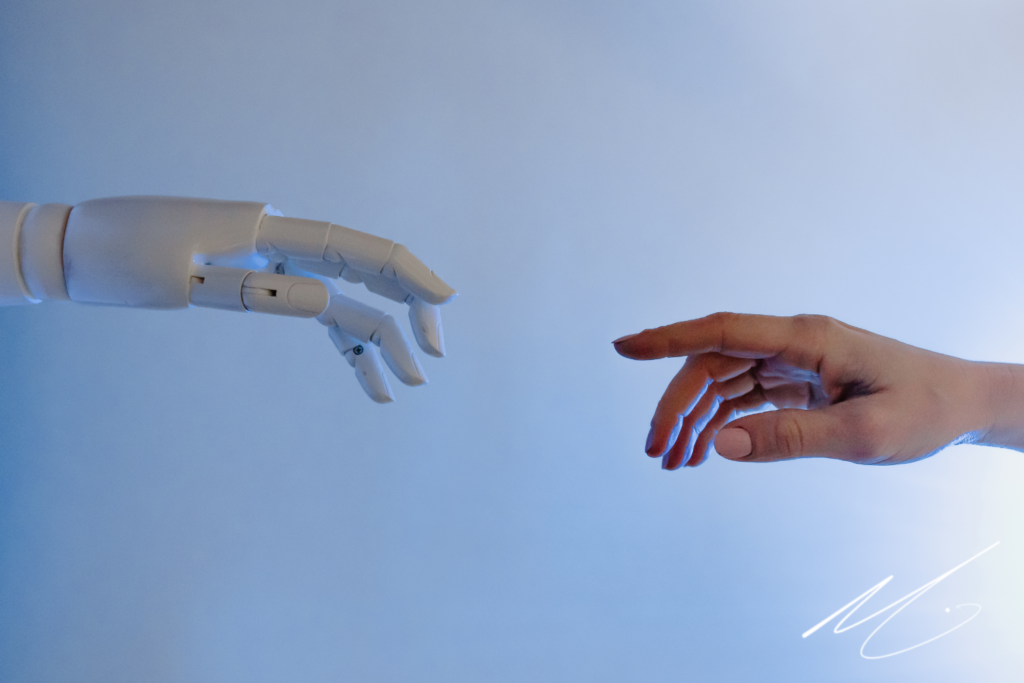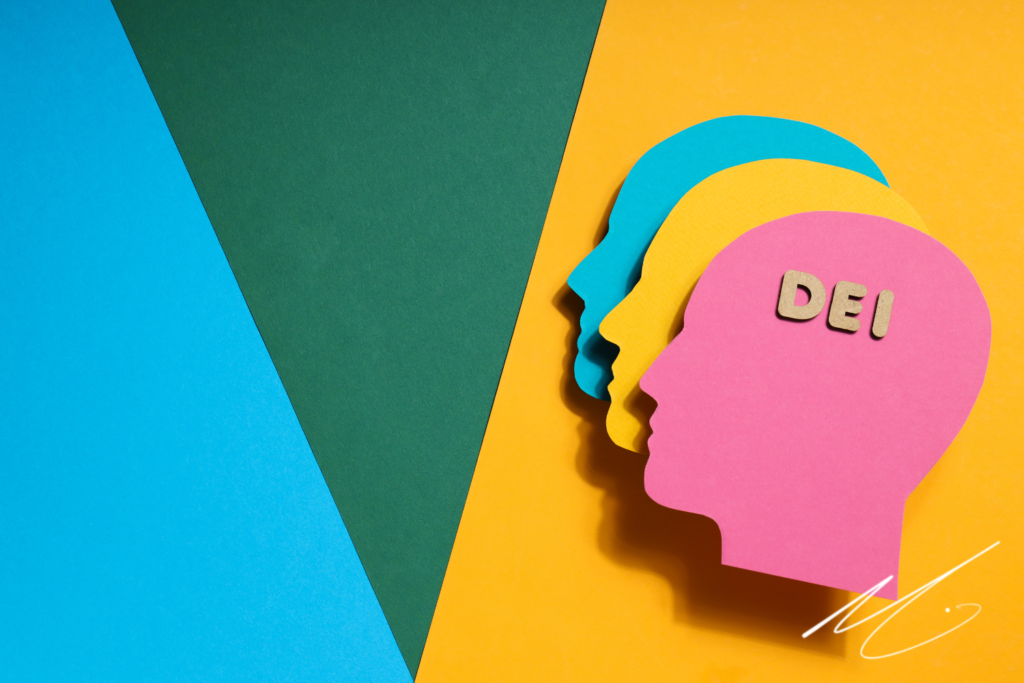Monolith
January 30, 2025
In today’s world, Diversity, Equity, and Inclusion has recently emerged as essential components of modern organisational culture, ensuring that workplaces reflect the diverse society they serve. Meanwhile there increasing presence of Artificial Intelligence continues to transform industries by streamlining processes, enhancing decision-making, and delivering progressive solutions.
You would think that these fields may seem unrelated or even at odds, particularly given AI’s reputation for unintentionally reinforcing biases. However, the intersection of DEI and AI presents opportunities to foster inclusivity and address inequities.
This blog explores how DEI and AI can collaborate, examining challenges, opportunities, and actionable strategies to ensure they work in tandem whilst looking at key considerations around combining DEI principles with AI development and deployment.
We know that AI systems rely on data to learn and make decisions right? If the input data reflects societal biases, AI models may inadvertently perpetuate or even amplify these biases. For instance, facial recognition systems have faced criticism for inaccuracies in identifying people of colour, and hiring algorithms have been found to prioritise candidates with traits associated with majority demographics. As you can imagine such issues pose challenges to aligning AI with DEI goals. Training data may under-represent certain demographics or encode discriminatory patterns in areas like hiring, lending, and criminal justice. So the question posed is how do we mitigate this?
Bias in Training Data: Historical data often mirrors existing disparities in society, leading AI systems to learn and replicate these patterns.
Lack of Representation in AI Development: The tech industry’s workforce lacks diversity, which can limit the perspectives and priorities considered in AI development.
Opaque Decision-Making: Many AI systems function as “black boxes,” making it difficult to identify and address bias.
Unequal Access to AI Benefits: Marginalised groups may have limited access to the opportunities and resources that AI-driven advancements create.
Despite these challenges, AI can also be a powerful tool for advancing DEI initiatives. When developed and applied thoughtfully, AI has the potential to promote fairness, mitigate biases, and create more inclusive systems.
Detecting and Mitigating Bias: AI can analyse patterns of bias in existing systems and recommend corrective measures. For example, algorithms can identify pay disparities, unequal hiring practices, or systemic inequities in resource allocation.
Enhancing Inclusive Decision-Making: AI systems can be designed to incorporate diverse perspectives. For instance, natural language processing tools can ensure that language used in communications or job descriptions is inclusive and free from bias.
Expanding Access to Opportunities: AI-driven platforms can help connect under-represented groups with educational, professional, and financial opportunities.
Improving Accessibility: AI-powered tools like speech-to-text software, real-time translation, and adaptive technologies can make workplaces and digital spaces more accessible for individuals with disabilities or language barriers.

Companies have now been known to use AI to develop fairer hiring processes and it seems to be getting bigger by the day. It does this by analysing candidates’ skills and potential rather than relying on traditional resumes, these systems aim to reduce bias and highlight candidates from diverse backgrounds. However, such systems require careful oversight to ensure their models do not inadvertently learn and replicate biases from existing hiring data. This is why we believe that the human touch is still required.
Some financial institutions have implemented AI tools to detect potential discriminatory practices in credit scoring and lending. By analysing the factors influencing decisions, the companies work to identify and address systemic inequities, ensuring fairer access to financial products. How would the average person feel about this? Does it feel out of a human’s control or judgment? I guess time will tell.
Social media platforms now use AI to moderate content and prevent harassment. Efforts are underway to improve the sensitivity of these systems to cultural and contextual nuances, ensuring that marginalised groups are better protected this is after all what we call governmental pressure no doubt to put some checks and balances in to make sure that software stays within moral parameters.

Diversify AI Development Teams: A more inclusive workforce in AI development ensures diverse perspectives inform system design, reducing the likelihood of bias and fostering innovation.
Invest in Ethical AI Research: Research and development should focus on creating transparent, interpretable models that prioritise fairness and inclusivity. Collaborations between academia, industry, and advocacy groups can accelerate progress.
Regular Audits and Monitoring: Organisations must conduct regular audits of their AI systems to identify and address bias. This includes examining the impact of these systems on different demographic groups and making necessary adjustments.
Community Engagement: Engaging with stakeholders, including marginalised communities, ensures AI systems address real-world inequities and do not exacerbate them.
Education and Awareness: Training programs for developers and decision-makers should emphasise the importance of DEI in AI. This includes understanding the implications of biased data, the need for transparency, and the potential of AI to drive positive change.
Policy and Regulation: Governments and regulatory bodies should establish guidelines to ensure AI development aligns with DEI principles. These could include mandatory bias testing, transparency requirements, and accountability mechanisms.
The future of AI and DEI integration will likely require ongoing adaptation and refinement. It is the hottest topic across the tech world at the moment. As AI technology evolves, new challenges and opportunities will emerge. Organisations must remain committed to continuous improvement and adjustment of their approaches.
Success will require sustained commitment from leadership, adequate resources, and genuine engagement with diverse stakeholders. While perfect solutions may not exist, thoughtful integration of DEI principles into AI development can help create more equitable and effective systems.
Ultimately, the goal should be to harness AI’s potential while ensuring its benefits are distributed fairly across society. This requires viewing DEI not as a constraint on AI development, but as an essential component of creating truly effective and beneficial AI systems.

The integration of DEI and AI is not only possible but also essential in building a fair and inclusive future and should honestly be adopted across the board. While challenges such as bias and unequal representation persist, they can be addressed through intentional design, thoughtful implementation, and continuous oversight.
By leveraging AI’s potential to identify and mitigate inequities, organisations can advance DEI objectives and create systems that truly serve everyone. The collaboration between DEI and AI is not merely a technological or ethical endeavour; it is a societal imperative, shaping a world where diversity, equity, and inclusion are embedded in the fabric of innovation which still requires human input!
Book a no-commitment, complimentary 20-minute Productivity Assessment with our experts. Discover how our team can best support your business